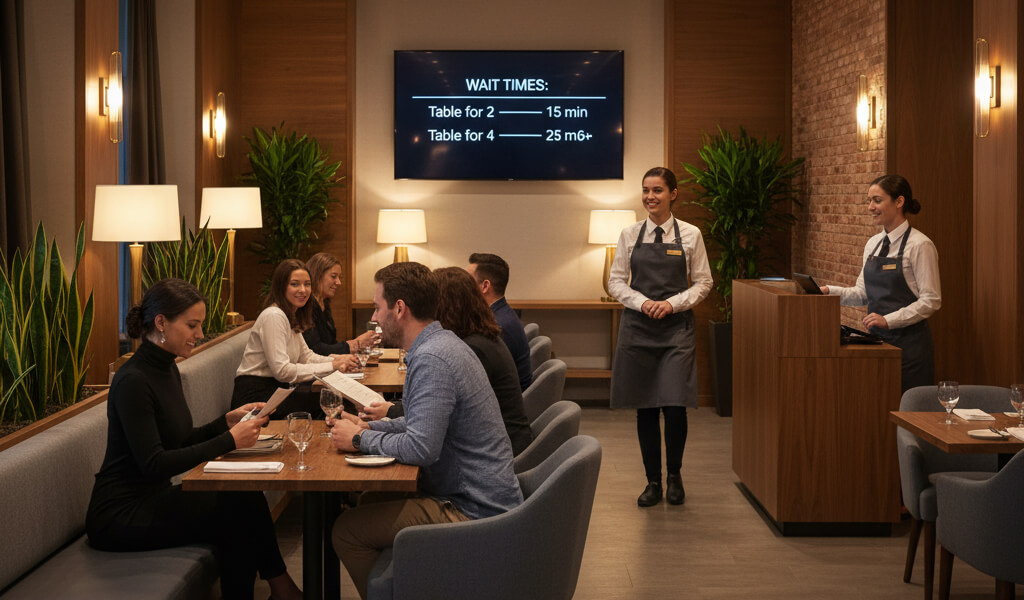October 06, 2025

Waiting is an inevitable part of dining — but how that wait feels to guests determines whether they return or leave a negative review. The psychology of waiting is well-documented: perception, not just duration, shapes satisfaction. Restaurants that design for these emotional responses can turn wait time into an opportunity for engagement, revenue, and brand-building.
Customers will tolerate long waits — if they feel short. In fact, a study by Professor David Maister (Harvard Business School) found that “occupied time feels shorter than unoccupied time.” It’s not the clock but the experience of waiting that defines how diners remember it.
What affects perceived wait times:
Tactical Solutions:
As shared in Why Small Restaurants Must Invest in Online Ordering, integrating pre-order options reduces on-site delays and aligns guest expectations with actual prep times — boosting perceived efficiency and overall satisfaction.
Guests stuck in a waiting area aren’t a lost cause — they’re a captive audience. Smart restaurants use this time to entertain, engage, and educate their customers.
Engagement Tools That Work:
Pro Tip: Use this “dead time” to promote your loyalty or subscription programs, driving long-term value from a short delay. As highlighted in Why More Restaurants Are Going Subscription-Based, this builds recurring revenue while turning passive guests into active brand advocates.
What happens before guests arrive can significantly reduce pressure on your in-person operations. If your online presence clearly communicates availability, peak hours, and how to plan ahead, guests are more likely to visit when it’s convenient — or opt to order instead.
Online Visibility Must-Haves:
RocketPages breaks this down in How Restaurants Can Attract Local Customers Through SEO, explaining how search engine visibility influences customer flow and pre-visit expectations.
Waiting doesn’t just happen at the host stand — it can also occur after guests sit down. That's why some restaurants are now rethinking the entire model of service timing.
Modern Wait-Reducing Approaches:
These approaches reduce pressure on kitchen staff and limit table delays — especially valuable for small dining rooms or high-traffic times.
With the right tech infrastructure in place, like integrated POS and online menus, these models streamline both the front- and back-of-house operations. This leads to shorter waits and happier staff.
Sometimes, a wait is unavoidable. But how you handle it can make all the difference between a one-star review and a five-star fan.
Risks of Poor Wait Management:
Opportunities in Transparent Wait Management:
Use your website and email follow-ups to ask guests about their experience — especially when they waited longer than expected. As seen in How to Use Your Website to Collect Customer Emails and Build Loyalty, this feedback loop creates trust and can inform adjustments to your scheduling or staffing.
Waiting doesn’t have to be painful — for you or your guests.
With the right communication, engagement tools, and digital integration, you can turn what’s usually a moment of frustration into an opportunity for connection and conversion. Whether you reduce wait times through technology or simply make them feel shorter through thoughtful design, the result is the same:
In the age of hyper-personalized dining, managing wait psychology might just be your most underrated competitive edge.
Stay up to date with the latest tips, expert insights, product reviews, and step-by-step guides to help you grow, create, and succeed—no matter your industry or passion.